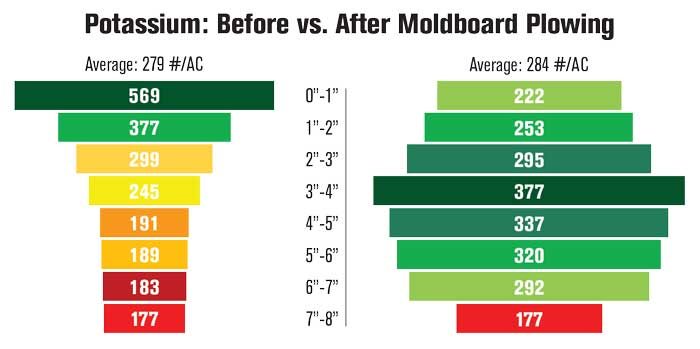No-Till Farmer
Get full access NOW to the most comprehensive, powerful and easy-to-use online resource for no-tillage practices. Just one good idea will pay for your subscription hundreds of times over.

DON’T TURN TO TILLAGE. Marion Calmer hoped that by flipping the top 8 inches of soil with a moldboard plow, he would invert his nutrient funnel. But he learned that plowing only puts the highest concentration of nutrients about 3-4 inches deep. He confirmed that tillage is not the solution to nutrient stratification. Instead, no-tillers need to find a way of placing nutrients below the seed.
It was at the 2017 National No-Tillage Conference that Marion Calmer began to wonder if stratification was a problem on his no-till farm in Alpha, Ill.
For 30 years, he’s been surface-applying his phosphorus (P) and potassium (K). While his soil tests indicated good levels, he was seeing symptoms of nutrient deficiencies in the corn, such as purple leaves and stunted growth.
“Even when the corn plant is a foot tall and I get some drier weather, I’m getting burnt leaf edges and poor yields in dry years,” Calmer says. “No-till should really shine in dry years.”
He also noticed that P and K applications often didn’t pay off. For three decades, he’s had 60-foot-wide plots where he would either broadcast P and K, or skip an application on a corn-soybean rotation. He calculated that every dollar’s worth of P and K he spent would only grow back 40 cents worth of grain.
The first step Calmer took after the 2017 conference was to examine the difference in nutrients vertically throughout his soil tests. He took some soil tests 8 inches deep and separately tested the top 4 inches from the bottom 4 inches. The results showed the top 4 inches had higher nutrient levels than the bottom.
He wondered how serious the vertical stratification was, so he decided to test his soil in 2018 at 0-2 inches, 2-4 inches, 4-6 inches and 6-8 inches deep.
The results showed the top 2 inches of soil had 108 pounds…